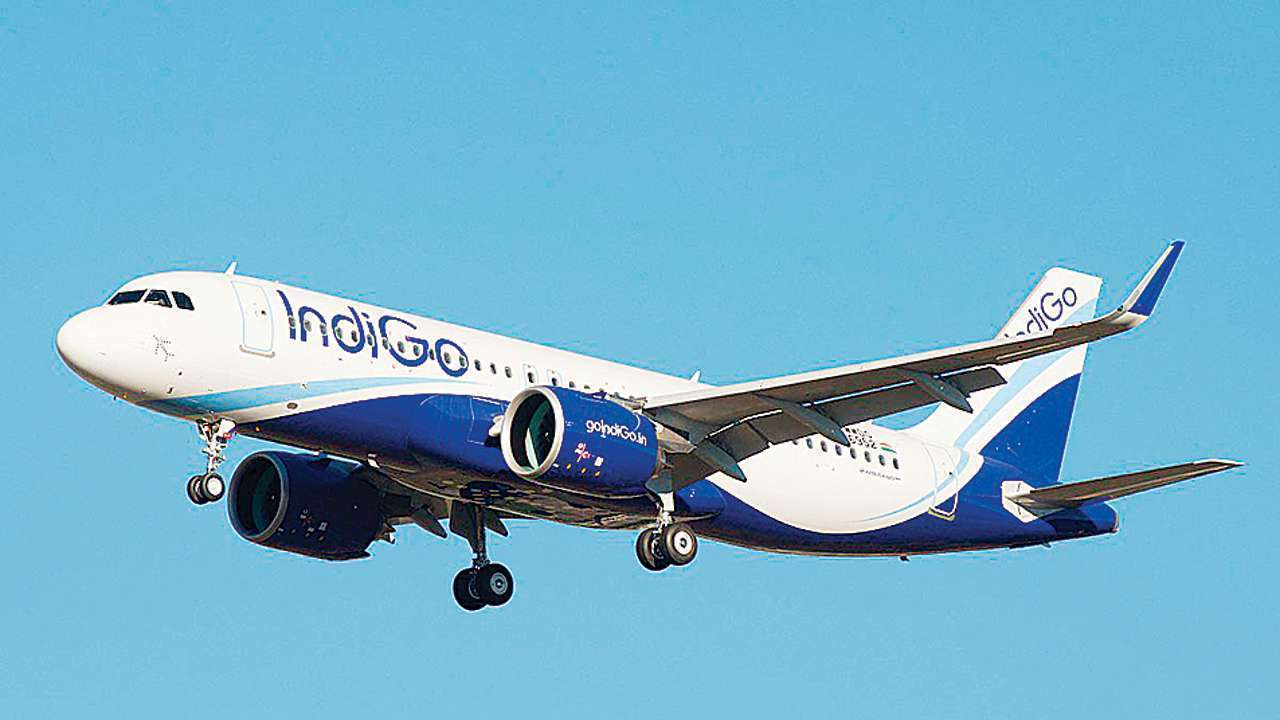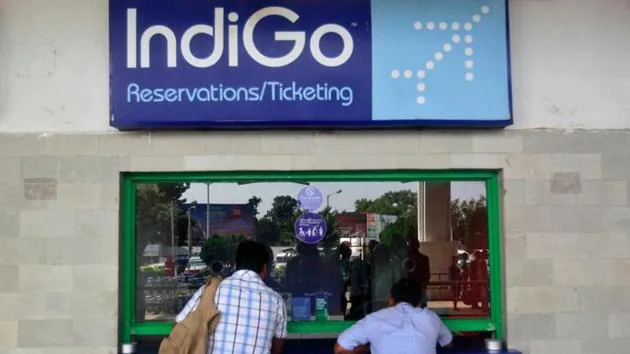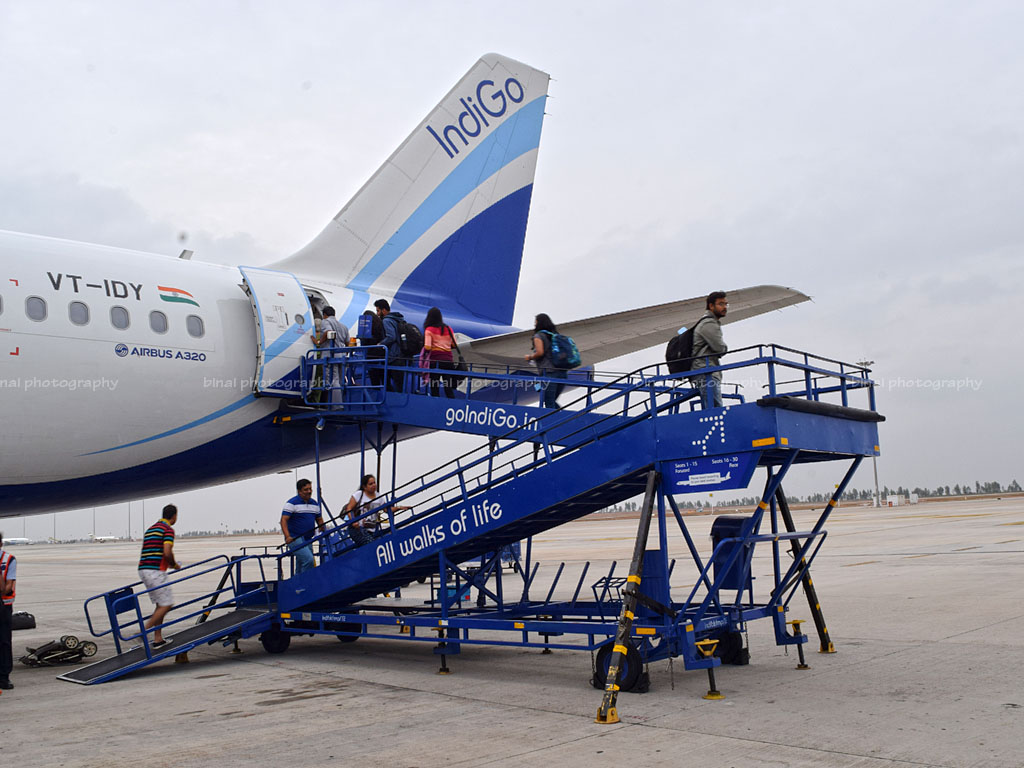InterGlobe Aviation Ltd
Company Overview
InterGlobe Aviation Ltd (IndiGo) is (NSE: INDIGO) India’s largest passenger airline with a market share of 54.3% as of January 2021. The company's journey began in August 2006 on the foundation of three pillars – offering low fares, being on-time, and delivering a courteous and hassle-free experience. Today, IndiGo has become synonymous with affordability, punctuality, and reliability. 1
With a fleet of 280 aircraft and growing, the company connect people across the globe to a network of over 91 destinations worldwide. A uniform fleet for each type of operation, high operational reliability and award-winning service make it one of the most reliable airlines in the world. Flying to 67 Destinations in India and 24 Internationally.
IndiGo is not only the most efficient low fare operator domestically but is also comparable with global low cost airlines. IndiGo is constantly enhancing its engagement with its passengers to augment their travel experience. From multichannel direct sales (including online flight booking, call centers and airport counters), to online flight status checking, an exclusive IndiGo app for Android, IndiGo has transformed air travel in India. Today, IndiGo is India’s most preferred airline. At IndiGo, low fares come with high quality.

Since 1989, InterGlobe Enterprises has been bridging gaps between people and markets. The company's unswerving commitment to this purpose has allowed it to establish a strong foothold in businesses such as civil aviation, hospitality, travel commerce, airline management, aircraft maintenance engineering, and advanced pilot training.
Over the past three decades, IndiGo has continued to expand its vision and become India’s leading and one of the most respected conglomerates. Headquartered in Gurugram and driven by a workforce of over 24,000 people spread across 27+ countries and 100+ cities globally, its passion for quality, value and innovation is set to power it into the future. 2
Industry Overview
Given the global nature of the COVID-19 pandemic that threatens to throw many economies into recession, it could take passenger air travel demand anywhere from several months to several years to recover to 2019 levels. This return to normalcy in airline travel will depend on multiple factors including the speed of virus containment, lifting of country border closures, restoration of confidence in air travel, and a return to normal economic and social activity. 3
After rapid expansion over the last decade when Indian aviation registered a Compound Annual Growth Rate (“CAGR”) of around 13.6% in domestic demand measured in terms of Revenue Passenger Kilometers (“RPKs”), it slowed down to 5% in 2019. The deceleration in growth was primarily driven by supply-side constraints due to industry consolidation subsequent to the cessation of operations of Jet Airways. Adding significantly to industry headwinds, COVID-19 hit the aviation Industry in Q4 FY 2020. In response to the virus, the Government banned international flights with effect from March 22, 2020 and domestic flights with effect from March 25, 2020. Even before these extraordinary measures were taken, the travel demand started to slow down significantly. This had a major impact on the financial performance of the Indian carriers.
In the medium to long term, once the crisis is over, the demand outlook for aviation remains very strong in India largely driven by under-penetration, rise in working population and expansion of middle class. (Refer to the section below for key growth highlights in the Indian aviation during the pre-pandemic period.) Furthermore, the rise in trade and tourism is also likely to boost the industry. Based on the recent data published by the Civil Aviation Administration of China (“CAAC’”), daily flights in China have recovered by 43% as of April 21, 2020 as compared to March 2020. Thus, although the COVID-19 outbreak will have a near-term negative impact, aviation in India should gradually recover and get back on track for rapid growth.
Moreover, India’s exports and imports have been growing strongly over the past decade. Growth in trade augurs well for the aviation industry as they handle about 30% of India’s total trade by value. Cargo has also seen a rising demand over the last few years. For example, during FY 2006-2019, domestic freight traffic increased at a CAGR of 8.3%, while international freight traffic grew at a CAGR of 6.9% during the same period. As per IBEF, by 2023, total freight traffic is expected to touch 4.14 million tonnes exhibiting growth at a CAGR of 7.3% between FY 2016 and FY 2023. International freight traffic is expected to grow at a CAGR of 7.1% while domestic freight traffic is expected to grow at a CAGR 7.5% between FY 2016 and FY 2023.
The share of travel and tourism in India’s GDP was 10.4% in 2018. Indian economy and the aviation industry have a symbiotic relationship and each benefit immensely with the growth of other. While the fast-paced growth of the aviation industry over the past decade can be largely attributed to the robust economic growth, economic growth has also been greatly benefitted by the growth in aviation industry. According to International Civil Aviation Organization (“ICAO”), for every $100 of output produced and every 100 jobs generated by air transport, an additional demand of around $325 and 610 jobs are triggered in other industries, globally. The aviation industry is further expected to increase its share in the Gross Domestic Product and help the economy by creating jobs and an increase in production through trade and tourism.

Business Overview
IndiGo commenced operations in August 2006 with a single aircraft and has grown its fleet to 262 aircraft as of March 31, 2020. The company had placed an order of 430 fuel-efficient A320 NEO family aircraft in 2011 and 2015, of which 114 have been delivered as of March 31, 2020. In addition to this, in October 2019, the company placed an additional firm order for the 300 A320 NEO family aircraft, which includes A321 XLRs in addition to A320 NEOs and A321 NEOs.
At the end of March 2020, the company had 100 fuel-efficient A320 NEOs giving it 15% lower fuel burn compared to the current generation of A320 CEOs without sharklets. The company also have 14 A321 NEOs in its fleet with higher seating capacity, lower unit costs and longer range compared to A320 NEOs. The company had placed an order with Pratt & Whitney to power 150 of its A320 NEO family aircraft. All the A320 NEO family aircraft that IndiGo has today use the Pratt & Whitney GTF engine. In addition to this, in June 2019, the company placed an order with CFM to provide engines for 280 of its NEO aircraft. With this order, IndiGo has identified its engine partner for the initial 430 A320 NEO family order.
In FY 2020, the company was awarded the ‘Best Low-Cost Airline in Central Asia and India’ for the tenth consecutive time at the Skytrax World Airline Awards 2019. The company is ranked as one of the best airlines in terms of on-time performance for the third consecutive year amongst the top 20 global mega-airlines based on data compiled by the OAG. IndiGo is the only Indian carrier to have made it to this list, three years in a row.
IndiGo has been recognised among the most valuable and strongest airline brands, as per the Brand Finance Airlines 50 report for 2020. Further, the company was also awarded the ‘Safety Partner - Best Aircraft Turn Around Activity’ by DIAL; the ‘Best Domestic Airline’ at FICCI’s first edition of Travel and Tourism Excellence Awards; and the ‘Companies with Great Managers Award’ by People Business in partnership with The Economic Times. These awards are a testimony to its best-in-class service quality. The company’s learning academy ‘ifly’ also won awards for best practices in Learning and Development under six different categories at the TISS LEAPVAULT Chief Learning Officer (“CLO”) awards by the Tata Institute of Social Sciences.

Financial Highlights
Income
Passenger ticket revenue:
Passenger ticket revenue increased by 25.0% from Rs. 251,576.91 million in FY 2019 to Rs. 314,470.59 million in FY 2020.
Revenue from ancillary products and services:
Revenue from ancillary products and services primarily include cargo, special service requests, ticket modification and cancellation, in-flight sales and tours. Revenue from ancillary products and services increased by 30.2% from Rs. 30,309.56 million in FY 2019 to Rs. 39,458.47 million in FY 2020.
Other Income:
Other Income primarily comprises of financial income on the cash and other nonoperating income. Other Income increased by 15.9% from Rs. 13,245.98 million in FY 2019 to Rs. 15,355.09 million in FY 2020.
Revenue per Available Seat Kilometre (“RASK”):
RASK increased by 5.6% from Rs. 3.57 in FY 2019 to Rs. 3.77 in FY 2020, driven by an increase in passenger yield and increase in unit ancillary revenue.
Expenses
Total expenses increased by 25.3% from Rs. 299,687.48 million in FY 2019 to Rs. 375,471.79 million in FY 2020.
Aircraft fuel expenses:
Aircraft fuel expenses increased by 4.3% from Rs. 119,427.93 million in FY 2019 to Rs. 124,537.94 million in FY 2020, against 18.8% increase in capacity, on a yearover year basis, and offset by reduction in IOCL ATF prices and increase in the number of fuel-efficient NEO aircraft.
Aircraft ownership cost:
Aircraft ownership cost comprises of aircraft and engine rentals, supplementary rental and aircraft maintenance cost, depreciation and amortisation, and net interest expense. Aircraft ownership cost increased by 41.5% from Rs. 79,171.24 million in FY 2019 to Rs. 112,052.99 million in FY 2020.
Employee costs:
Employee costs increased by 46.7% from Rs. 32,105.57 million in FY 2019 to Rs. 47,099.59 million in FY 2020.
Foreign exchange (gain)/ loss:
Foreign exchange losses increased from Rs. 4,674.87 million in FY 2019 to Rs. 15,461.89 million in FY 2020, primarily driven by mark to market losses on the capitalised operating lease liability, as a result of IndAS 116.
Other expenses:
Other expenses increased by 19.9% from Rs. 29,482.57 million in FY 2019 to Rs. 35,340.04 million in FY 2020.
Cost per Available Seat Kilometre (“CASK”):
CASK increased by 5.8% from Rs. 3.59 in FY 2019 to Rs. 3.80 in FY 2020, primarily driven by increase in unit employee cost, unit supplementary rental and aircraft maintenance cost, and higher mark to market losses as a result of rupee depreciation.
The company reported a net loss of Rs. 2,336.78 million in FY 2020 against a net profit of Rs. 1,572.47 million in FY 2019. This resulted in an increase/decrease in the Return on Equity from 2.3% in FY 2019 to -4.0% in FY 2020.
The total cash increased by 33.1% to Rs. 203,769.40 million as of March 31, 2020, comprising of free cash of Rs. 89,280.97 million and restricted cash of Rs. 114,488.43 million. Total debt for the company was Rs. 227,191.68 million, including capitalised operating lease liability of Rs. 202,848.64 million, as of March 31, 2020.

Fiscal Year 2021 results.
June 05, 2021: InterGlobe Aviation Ltd. (“IndiGo”) today reported its fourth quarter and fiscal year 2021 results. 4
For the quarter ended March 31, 2021
- Revenue from Operations of INR 62,229 million, a decrease of 25% compared to the same period last year.
- EBITDAR of INR 6,483 million with EBITDAR margin of 10.4% compared to EBITDAR of INR 867 million with EBITDAR margin of 1.0% for the same period last year.
- Loss before tax of INR 11,575 million, compared to a loss before tax of INR 12,898 million during the same period last year
- Net loss of INR 11,472 million compared to a net loss of INR 8,708 million in the same period last year.
- Basic earnings per share of negative INR 29.8
For the year ended March 31, 2021
- Revenue from Operations of INR 146,406 million, a decrease of 59.1% compared to the last year against a capacity decrease of 52.8% during the year.
- EBITDAR of INR 6,227 million with EBITDAR margin of 4.3%, compared to EBITDAR of INR 50,824 million with EBITDAR margin of 14.2% for the last year.
- Loss before tax of INR 58,181 million, compared to loss before tax of INR 2,557 for the last year.
- Net loss of INR 58,064 million, compared to net loss of INR 2,337 in the last year.
- Basic earnings per share of negative INR 150.9
- Strong balance sheet with a total cash of INR 185,685 million including free cash of INR 70,997 million
The Company’s CEO, Mr. Ronojoy Dutta said “This has been a very difficult year with its revenues slumping hard due to covid, showing some signs of recovery during the period December to February and then slumping again with the second wave of the covid. While IndiGo has seen a sharp decline in revenues in March through May, IndiGo is encouraged by the modest revenue improvements starting last week of May and continuing through June. The company see this pandemic as a period of great trial for both its shareholders and its employees. IndiGo is focusing all its efforts and all its energies to strengthen the foundations and the pillars of IndiGo so that the company emerge from this trial significantly stronger structurally and even more customer responsive than ever before. While IndiGo has produced disappointing financial results this year, IndiGo has also positioned itself to be the best-in-class airline when the inevitable recovery finally arrives.”
References
- ^ https://www.interglobe.com/aviation/indigo
- ^ https://www.interglobe.com/about-us
- ^ https://www.goindigo.in/content/dam/goindigo/investor-relations/annual-report/2019-20/Annual-Report-InterGlobe-Aviation-Limited-FY-2019-2020.pdf
- ^ https://www.goindigo.in/content/dam/goindigo/investor-relations/Financial%20Results/2020-21/q4-jan-to-mar-2021/Audited-Financial-Results-Q4-and-FY21.pdf